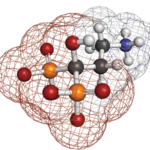
WindNight / shutterstock.com
As we turn the corner on the second decade of biologic use for rheumatic disorders, a reappraisal of approach in our communication with patients is due. In practice, the impact these agents have on patients’ lives justifies the friction rheumatologists face when connecting patients to them. You can understand why older rheumatologists who apprenticed on gold, penicillamine and those “cancer” drugs, methotrexate and azathioprine, are so enamored of the current therapeutic era. Not only has it fostered a genuine sense of control over the autoimmune chaos confronting our patients for the first time, the risks also appear relatively modest.
The same tensions felt long ago about infection and cancer when adopting conventional synthetic disease-modifying anti-rheumatic drugs (csDMARDs) arose again in our collective psyche as we entered the biologic age. As before, the preponderance of positive experiences has begun to allay our reservations. Notwithstanding comorbidities or histories that might put the individual in front of us at extra risk, we proceed more confidently. Nonetheless, our speeches to patients and the related media they encounter remain heavy on the risks. It may be time for modification.
Background
In recent years, the aggregation of our clinical experience and real-world evidence reveals a growing ambiguity between the boxed warnings for biologic agents and information not factored into the warnings. The admonitions for the biologic and small molecules we use are similar and class based, with little deviation from the initial versions exemplified by that for infliximab in 1998:1 “Patients treated with Remicade (infliximab) are at increased risk for developing serious infections that may lead to hospitalization or death.”
Increased? Compared to what? In most randomized, controlled trials of biologic agents for rheumatic disorders, the cohort receiving the investigational biologic agent has a few percent higher reported serious infections than do controls. Occasionally, the reverse is true. The differences cited in serious infection rates between the comparator arm for anti-tumor necrosis factor (TNF) class drugs (infliximab, adalimumab and etanercept) are not statistically significant.2,3 Nonetheless, for adverse events considered serious or life-threatening, even insignificant differences between active and comparator arms elicit these boxed warnings.
Even if the warnings are a bit overblown, we are okay with that. A multitude of non-rheumatology healthcare workers will encounter our patients on biologic agents in a variety of settings and should be sharply alerted to the potential that a patient may be less able to confront an infection without assistance. The trap lies in the reflexive attribution of every microbial encounter to the drug rather than considering other aspects of the patient’s life condition.



